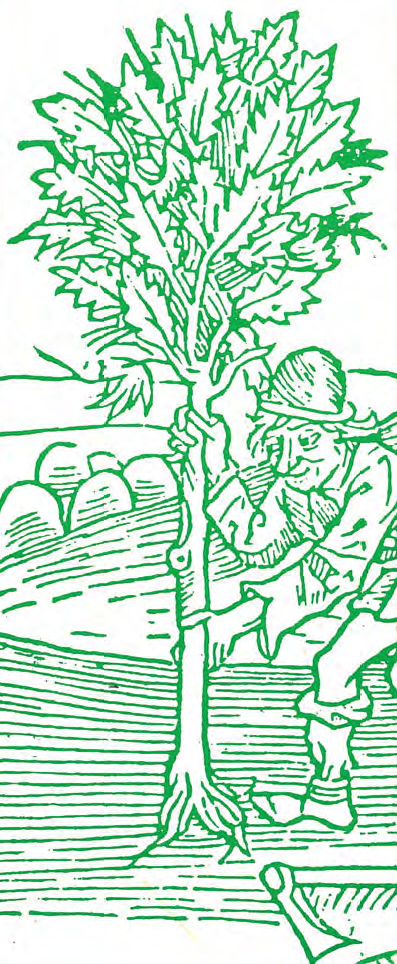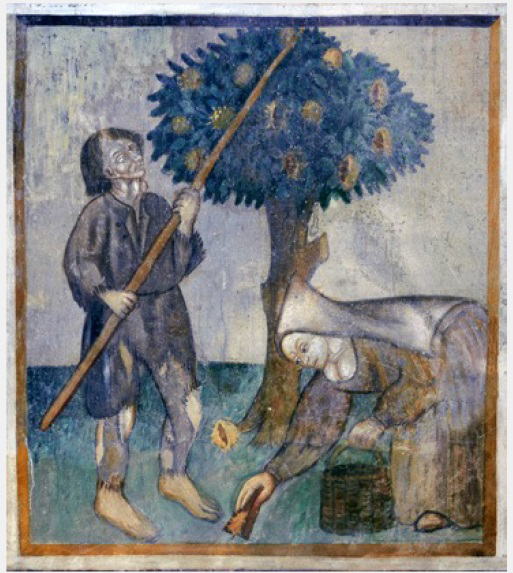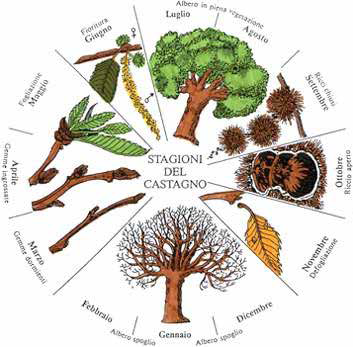The importance of the chestnut wood as a fruit tree has been immense since medieval times, influencing the landscape and culture in many areas to the point of giving rise to the so-called 'chestnut civilization'. It seems that this plant has been present in the Apennines since pre-glacial times, and there is no doubt that humans are responsible for its spread. In fact, the replacement of mixed forests with chestnut wood began in the late Roman period.
The chestnut wood can be compared to an orchard from which chestnuts and their flour can be obtained, which for centuries has represented the food base of many communities, so much so that the chestnut was defined as the 'bread tree'. Chestnuts have always been the last harvest of the agricultural season.
Chestnut forests are generally characterized by a high number of plants per hectare. Only where large-sized chestnuts are desired density is limited.
In order to be productive, a fruit chestnut wood needs periodic care that consists in the elimination of the undergrowth to encourage the harvesting of fruits, in the removal of suckers and in the pruning of the crown. Chestnut harvesting, if done manually, is very time-consuming; only in some areas are used specific machinery.
In the territory of the municipality of Capolona, as in most of Tuscany, chestnut woods are either abandoned or converted into coppice. The reasons for this phenomenon are to be found in the depopulation of the hills and mountains, in addition to the change of lifestyle of the local populations. Two serious fungal diseases have also contributed to the abandonment of chestnut cultivation: cortical cancer (Cryphonectria parasitica) and ink disease (Phytophthora cambivora). For some years, chestnut trees have also been attacked by the Asian cynipid insect (Dryocosmus kuriphilus), which lays its eggs inside the buds, producing characteristic 'galls'.
Today, local chestnut woods are mainly used for vineyard and fencing poles. Chestnut wood is also used for the production of tannin, which this plant is rich in, as this substance increases the wood's resistance to external agents. From the tree, roof beams and floorboards are also obtained.
Chestnut wood has always been particularly appreciated by artisan blacksmiths, beacouse during combustion, it reaches ideal temperatures for working iron.
A decree of the Grand Duke of Tuscany in 1567 required that 'the wild chestnut forests be maintained' and specified that 'no person of any status, rank, or condition, by virtue of this decree, shall dare or presume in any way to cut, or have cut, chestnut trees'.


